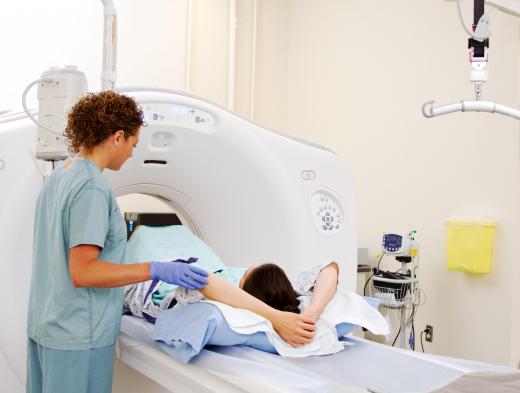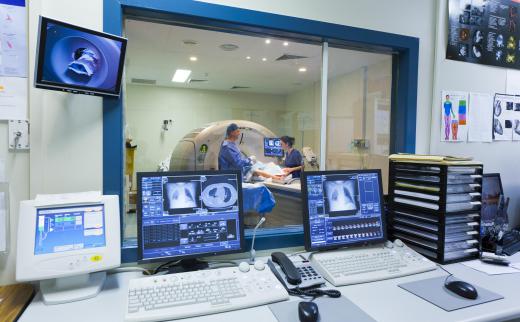What is Nuclear Magnetic Resonance?
All magnetic nuclei posses a property called nuclear magnetic resonance, or NMR, when they are within a magnetic field, and when certain other conditions are met. A range of different types of technology have been developed according to these principles. These include various types of medical imaging and spectroscopy.
Nuclear magnetic resonance hinges on the fact that when an oscillating electromagnetic pulse is applied to nuclei within a magnetic field, individual nuclei absorb energy, and then release that energy in specific patterns. The pattern of energy absorption and release depends on the strength of the magnetic field as well as certain other variables. By examining these patterns, physicists are able to investigate quantum mechanical properties of atomic nuclei. Chemists can use NMR technology to explore the chemical and structural composition of samples, and in medicine, nuclear magnetic resonance technology is the basis of an often-used type of medical imaging equipment.

All NMR technology also relies on a property called spin. When determining whether a given atomic nuclei has spin, the number of nucleons in the atom is counted. The nucleon is the collective name given to protons and neutrons. If the number of protons and neutrons in a nucleus is an odd number, the amount of spin the nuclei has is greater than zero. That nucleus is therefore said to possess the property of spin. Any nucleus that possesses spin can be examined using NMR technology.

In nuclear magnetic resonance spectroscopy, a machine called a nuclear magnetic resonance spectrometer is used to obtain information about the type, number, and arrangement of nuclei within a given sample. Analysis of an NMR spectrum by a chemist, for example, can provide information about the different types of chemicals present within a sample, as well as the structure of the different molecules present. NMR spectroscopy has, for example, been instrumental in understanding how nucleic acids and proteins are structured and also provides clues on how these molecules function.

The basis of nuclear magnetic resonance imaging relies on the fact that the resonance frequency of different molecules is proportional to the strength of the magnetic field that is applied to them. When a sample is placed within an oscillating magnetic field, the resonance frequencies of the nuclei within the sample vary depending on where they are located within that field. These variations can then be used to build up a picture of the sample itself.
In medicine, this technique is commonly known as magnetic resonance imaging, or MRI. This medical imaging equipment uses magnetic fields to align the hydrogen atoms that are present in water. Since the human body contains a large proportion of water, aligning hydrogen atoms in this way produces enough information to build up a picture of the internal structure of the body. The possession of spin is an important concept in this technology. This is because hydrogen atoms, which have spin, respond differently to magnetic fields depending on what other types of molecules they are bonded to, and even the types of molecules they are positioned close to.
NMR technology has many other theoretical and practical applications. The petroleum and natural gas industries use NMR technology to aid in exploration of the earth’s rock to locate deposits of these fuels. One of the most significant uses of NMR technology in examining samples is that it is done without destroying the sample. This means NMR tests can be carried out on samples that are delicate or dangerous with much reduced risk.
AS FEATURED ON:
AS FEATURED ON:













Discussion Comments
Is Ion-nuclear-magnetic energy possible?
Is it then possible to use the external magnetic field to create a back pressure onto a sample that has an applied internal pressure? Would it be possible to alter an object's three dimensional characteristics using frequency only?
Post your comments